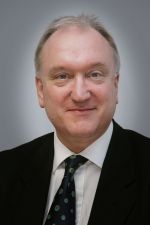The external importance of our research portfolio
Financial facts matter in the debate on higher education and the recent report commissioned from Oxford Economics valued our university‘s annual economic contribution at £274 million.
 Professor Michael Davies, Pro-Vice-Chancellor (Research)
Professor Michael Davies, Pro-Vice-Chancellor (Research)
It is good that we can put a cash figure on our endeavours in a world where public finances remain extremely tight. Demonstrating the return to tax payers is important when arguing for sustained public support.
Economically, Brighton and Hove and the surrounding towns benefit enormously from our presence. We provide well-paid, highly skilled jobs and the money spent by our staff and students underpins the region's commercial fabric. Our graduates and our research are often the core drivers of innovation.
The wider contribution we make, though, is just as important, even if more difficult to quantify.
Sussex is a special institution in a special place. Our campus sits on both the edge of a national park and of one of the most diverse and exciting cities in Europe and we – and our research efforts in particular – are playing a positive role in preserving and enhancing both the natural beauty of the South Downs and the vibrancy of Brighton.
On 11 June UNESCO announced that they had granted ‘Biosphere’ status to the Brighton and Lewes Downs, an area that includes the Falmer campus. One of only a handful of such reserves to include a city, the biosphere will be at the forefront of
international research into human impact on the natural world, and the University will be at the core of that.
(The soundtrack to the short film was written by Nicole Madi, a Sussex student studying for an MA in Music and Sonic Media.)
The University, of course, has already placed environmentally sensitive development at the heart of its strategic plan. Our planned growth is essential both for our financial stability and to maintain our position as a world-leading research institution: the evidence clearly shows that bigger research groups are disproportionally successful in attracting external funding. Yet it would be foolish if we were to damage the fundamental character of the University’s physical environment, both in terms of setting and the striking buildings designed by Sir Basil Spence, as we grew.
That growth will bring other regional benefits. Earlier this year the University was a key signatory to the Brighton City Deal, which could eventually attract £170 million of investment and thousands of jobs. Central here is the proposal to develop ‘Tech City South’ - a high-technology jobs hub. Arts, design and social sciences will all help create what the University's Science Policy Research Unit (SPRU) calls “superfused” jobs – where the sciences and the humanities come together to create new centres of innovation and growth.
That will be supported by our significant investment in science buildings and infrastructure in Falmer: investment made possible by our growth.
Interdisciplinary research has always been at the heart of the Sussex vision, something emphasised recently when we launched our research impact report.
I hope you can take the time to have a look at that section of the website and watch the excellent videos that have been produced. Our research portfolio is as exciting as ever as we enter our second half century – but if anything its external importance is greater and we need to do more – a lot more – to highlight its importance, so expect to see much more about it in the coming months.
